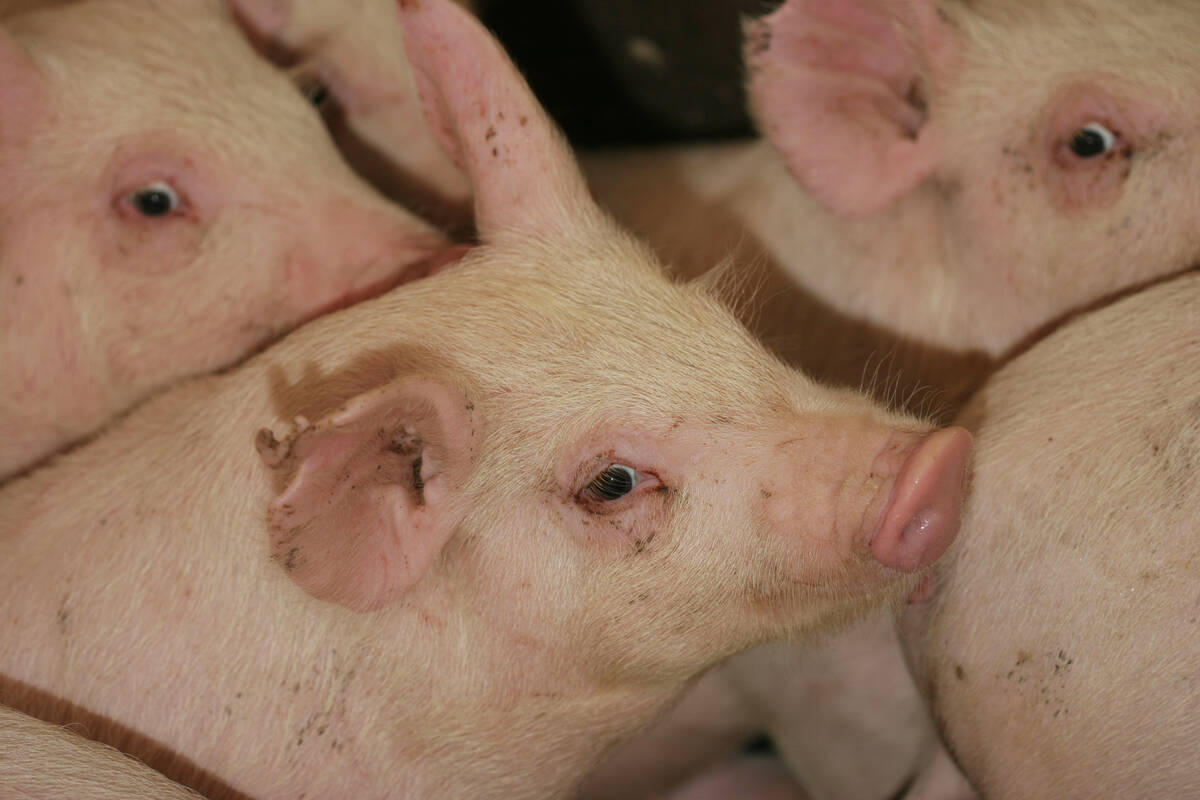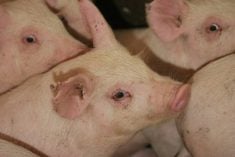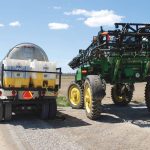Some cattle producers remain skeptical about the merits of evaluating the semen of breeding bulls before turn out. However, veterinarians who conduct breeding soundness evaluations do more than check the semen.
We look at live sperm to check for motility and we kill sperm in a stained sample to look at its morphology, which is the percentage of defective sperm. These defects can be seen with a high power microscope. Certain defects are caused by faulty formation. Others crop up when the bulls are not active and the sperm becomes stagnant. These defects result from improper maturation of the sperm.
Read Also

The Western Producer Livestock Report – September 25, 2025
The U.S. national live price average for barrows and gilts was $81.21 Sept. 17. It was $78.37 Sept. 9. U.S. hogs averaged $106.71 on a carcass basis Sept. 17, up from $106.10 Sept. 9.
When the bull is restrained for collection, body condition is assessed and the feet, legs and sheath checked.
A big part of any evaluation is scrotum measurement, which indicates semen production. Generally the larger the scrotum, the more semen will be produced up to a maximum of 39 centimetres. After that, production does not go up much.
The vet also palpates the testicles, the spermatic cords and epididymis, where the sperm mature, for signs of abnormality. Each testicle’s size and shape is compared with the other and any differences are noted, including their firmness or softness.
Abnormalities may indicate a sperm problem or show that normal sperm is coming from only one testicle. In this case, serving capacity will be markedly diminished. We want to select bulls for higher serving capacity.
Sperm is collected using a probe inserted in the rectum, which gives a low electrical impulse. This small current is brought up smoothly and causes the bull to become erect, in most cases protrude its penis from the sheath and then ejaculate.
It is important that the penis protrudes so it can be checked for cuts, warts or a frenulum, which is a ligamentous tie-down between the penis and sheath. Most of these conditions are found in yearling bulls at a fairly low percentage, but they can render it infertile or subfertile. Blood, which is often present because of these conditions, is detrimental to semen quality.
Just before veterinarians insert the probe, they palpate the internal sexual organs to check differences in size, infection and scarring.
The seminal vesicles are the dominant organs, much as the prostate gland is in humans. Lively sperm production suffers if the organs become infected, either from blood-borne infections or those ascending from navel infections. Infections in these areas show up as pus in the semen. In some cases these infections can be treated, but usually these bulls are culled.
A bull’s eyes are always examined closely. Ideally we want a bull with two fully functioning eyes to identify cows in heat. It is important that binocular vision exists for depth perception. Can a bull breed with one eye? Of course, but in a large pasture, cows in heat in the distance might be missed.
Producers who eliminate these infertile or subfertile bulls through a breeding soundness evaluation can improve conception rates.
About 20 percent of bulls can have fertility issues. It worsens in large herds with multiple bulls if the dominant bull is the infertile one.
Ideally it’s best to test all breeding bulls every year. If not, the new young bulls should definitely be tested. Purebred breeders normally test all yearlings as a condition of sale so they don’t sell problems to their customers.
Bulls older than four and past their prime are good candidates for testicular degeneration and other conditions affecting reproductive ability.
Bulls that have been sick or injured or that have had frostbite or swelling on their testicles should be examined as well.
The lowest priority would be bulls in their prime breeding age with no previous problems. Infertile bulls can still be found in this group but it is less likely. However, make sure they were tested initially as yearlings.
The only breeding prerequisite that veterinarians don’t test is the libido or sex drive. We often leave this up to the producer. Watching bulls breed the first one or two times in the season is always a good idea.
Yearlings especially can be awkward and have difficulty entering and completing the breeding.
Ensure they are entering the cow and ejaculating before turning them out into the herd.
Watch for other signs during the breeding season, such as swellings on the sheath or scrotum that indicate a broken or cut penis.
Breeding soundness exams are an integral part of a beef herd health program. Vaccines for footrot or pinkeye tagging can be done at the same time bulls are processed to eliminate that headache later.
Roy Lewis is a veterinarian practising in Westlock, Alta.














